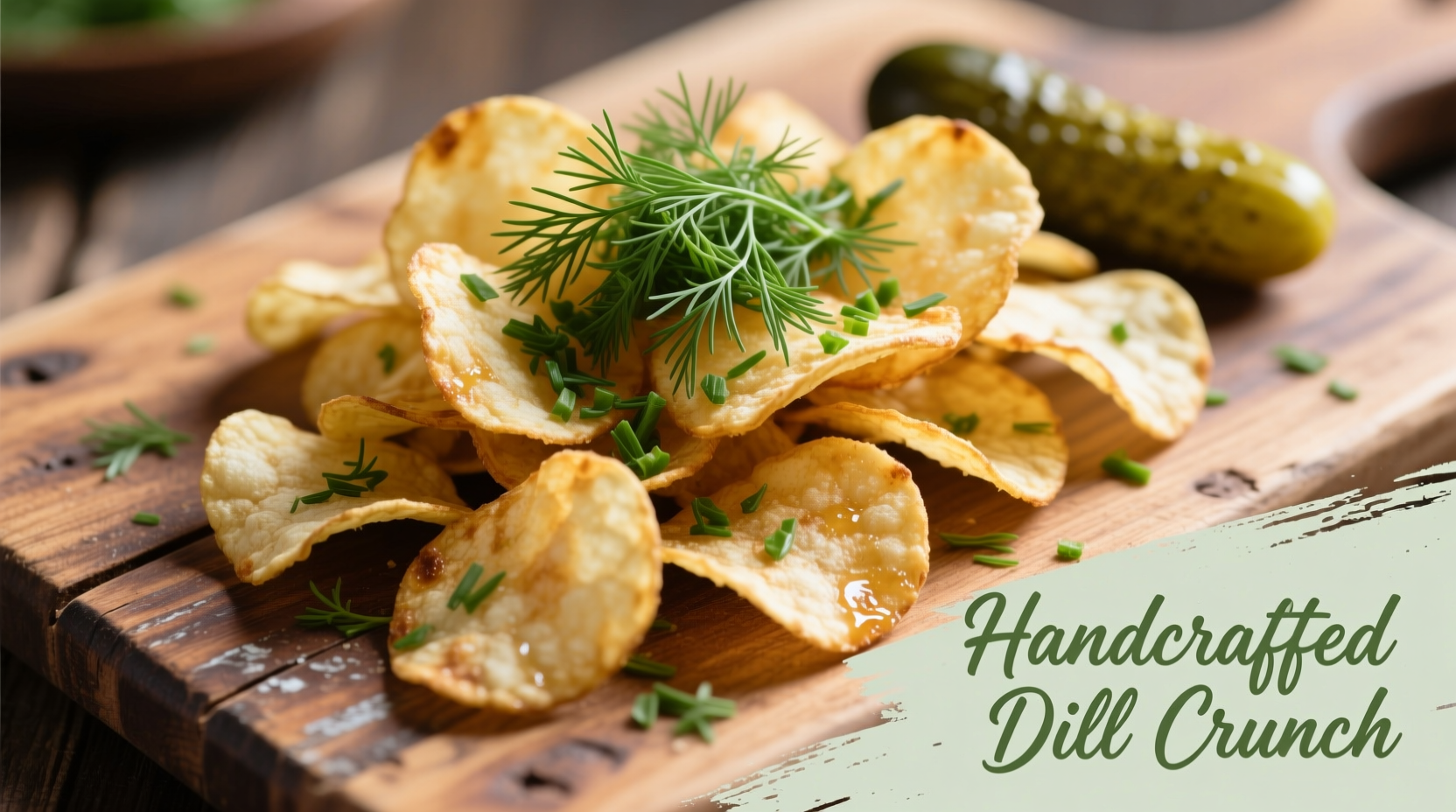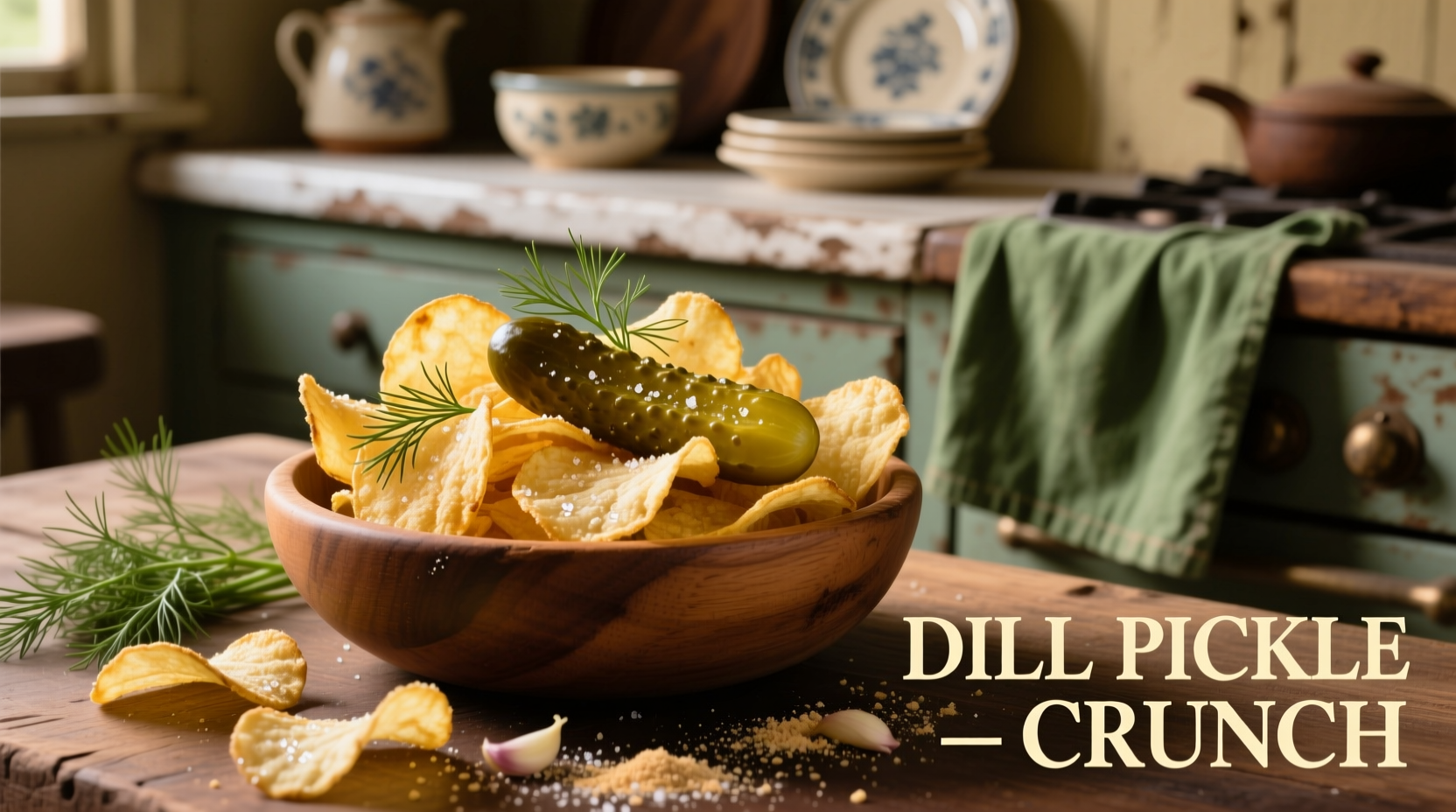Ever wondered what gives dill pickle potato chips their distinctive tangy kick? These zesty snacks have become a pantry staple for flavor seekers, but understanding what makes them special goes beyond just the name. Let's explore the science, history, and perfect ways to enjoy this beloved flavor.
The Flavor Science Behind Dill Pickle Potato Chips
Unlike regular salted chips, dill pickle potato chips achieve their signature taste through a carefully balanced seasoning blend. The magic happens through a combination of:
- Vinegar powder (providing the sharp tang)
- Dried dill weed (delivering the herbal note)
- Garlic powder and onion powder (adding depth)
- Salt (enhancing all flavors)
- Malic acid or citric acid (boosting sourness)
- Spice extracts (for authentic pickle flavor)
Food scientists have perfected this blend to replicate the complex flavor profile of traditional dill pickles. According to research from the Institute of Food Technologists, the key to authentic dill pickle flavor lies in the precise ratio of vinegar compounds to herbal elements. The seasoning must balance sourness without overwhelming bitterness while maintaining that unmistakable dill character.
| Flavor Component | Primary Source | Contribution to Final Taste |
|---|---|---|
| Tangy Sourness | Vinegar powder, malic acid | Recreates pickle brine sharpness |
| Herbal Note | Dried dill weed | Provides authentic dill character |
| Savory Depth | Garlic powder, onion powder | Enhances complexity, balances sourness |
| Saltiness | Sea salt | Amplifies all flavor elements |
From Deli Counter to Snack Aisle: A Flavor Evolution
Dill pickle flavor didn't start in the chip world—it has roots in traditional Eastern European and American deli culture. The journey to becoming a popular chip flavor follows this timeline:
- 1890s-1920s: Dill pickles gain popularity in American delis, particularly in New York City
- 1950s: First flavored potato chips emerge (cheese, barbecue)
- 1970s: Regional brands experiment with dill pickle flavor in Midwest markets
- 1990s: Major snack companies introduce national dill pickle chip varieties
- 2010s-Present: Dill pickle becomes one of the top five most popular specialty chip flavors
According to market data from the Snack Food & Wholesale Bakery publication, dill pickle consistently ranks as the third most popular specialty potato chip flavor in North America, trailing only barbecue and sour cream & onion. This enduring popularity stems from its perfect balance of familiar and adventurous—a gateway flavor for those seeking something beyond basic salted chips.
Commercial vs. Homemade: Understanding Your Options
While store-bought dill pickle potato chips offer convenience, understanding the differences between commercial products and homemade versions helps you make informed choices:
- Commercial chips: Use vinegar powder and flavor extracts for consistent taste; often contain additional preservatives; available year-round
- Homemade versions: Typically use fresh dill and actual pickle juice; flavor varies by batch; require immediate consumption
Food safety is a crucial consideration when making dill pickle chips at home. The USDA's Food Safety and Inspection Service notes that moisture from fresh pickle juice can create conditions favorable for bacterial growth if not properly managed during the cooking process. Commercial producers overcome this by using vinegar powder rather than liquid vinegar, ensuring both safety and shelf stability.

Perfect Pairings: Taking Your Dill Pickle Chips Experience Further
Dill pickle potato chips shine when paired thoughtfully. Here are professional pairing suggestions that elevate this snack from ordinary to extraordinary:
- Cold beverages: Crisp lagers, dry ciders, or unsweetened iced tea cut through the vinegar tang
- Dips: Ranch dressing, Greek yogurt dip, or smoked white bean dip complement the herbal notes
- Main dishes: Serve alongside grilled chicken sandwiches or fish tacos for a flavor bridge
- Cheese pairings: Mild cheddar, havarti, or fresh goat cheese balances the acidity
For home entertaining, try arranging dill pickle chips with small bowls of different dips—this creates an interactive tasting experience that showcases how the flavor interacts with various accompaniments. The chips' acidity works particularly well with creamy or fatty foods, making them an excellent counterpoint to rich dishes.
Creating Your Own Dill Pickle Potato Chips
If you're feeling adventurous, making dill pickle potato chips at home allows for complete flavor customization. Here's a professional approach that ensures safety and maximum flavor:
- Thinly slice russet potatoes (1/8 inch thick) using a mandoline
- Soak slices in cold water for 30 minutes to remove excess starch
- Pat completely dry with clean kitchen towels
- Fry in 350°F oil until golden (about 3-4 minutes)
- Immediately toss with seasoning blend while still warm
The critical step is the seasoning application. For authentic dill pickle flavor without sogginess, use this ratio-tested blend:
- 2 tablespoons dried dill weed
- 1 tablespoon garlic powder
- 1 tablespoon onion powder
- 1½ tablespoons vinegar powder
- 1 teaspoon citric acid
- 1½ teaspoons sea salt
Apply this blend to 4 cups of freshly fried chips for perfect flavor distribution. Remember that homemade versions lack the preservatives of commercial products, so enjoy them within 24 hours for optimal crispness and flavor.
Understanding Flavor Variations Across Brands
Not all dill pickle potato chips taste the same. Regional preferences and brand formulations create notable differences in the marketplace:
- Midwest brands: Tend toward stronger vinegar punch and more prominent dill flavor
- East Coast varieties: Often include additional garlic notes and slightly sweeter profile
- West Coast options: Typically feature more subtle seasoning with emphasis on herbal notes
- Artisanal producers: May incorporate actual pickle brine or fermented elements for complexity
These regional variations reflect broader American taste preferences documented by the USDA Agricultural Research Service. Understanding these differences helps you select products that match your personal flavor preferences rather than settling for a one-size-fits-all approach to this versatile snack.











 浙公网安备
33010002000092号
浙公网安备
33010002000092号 浙B2-20120091-4
浙B2-20120091-4